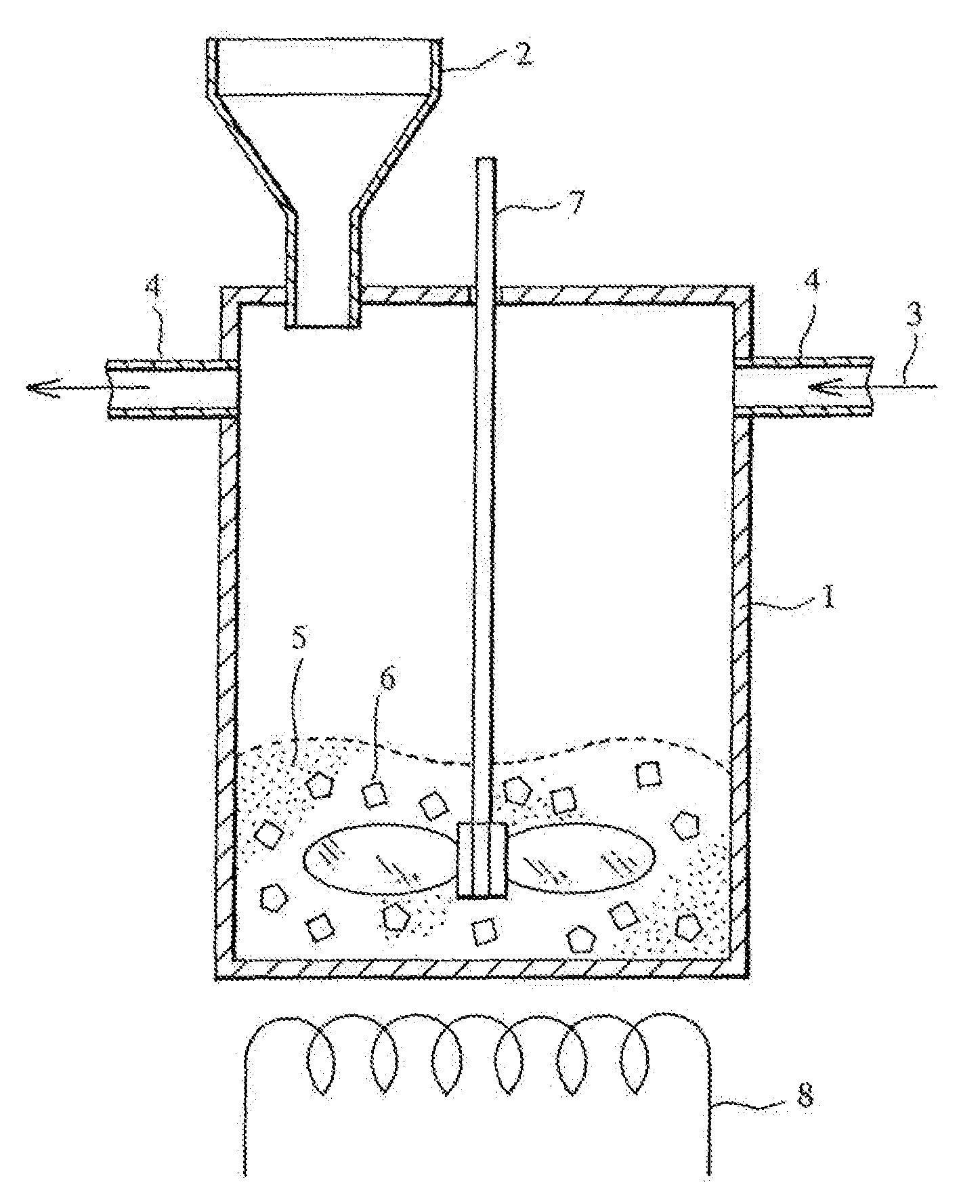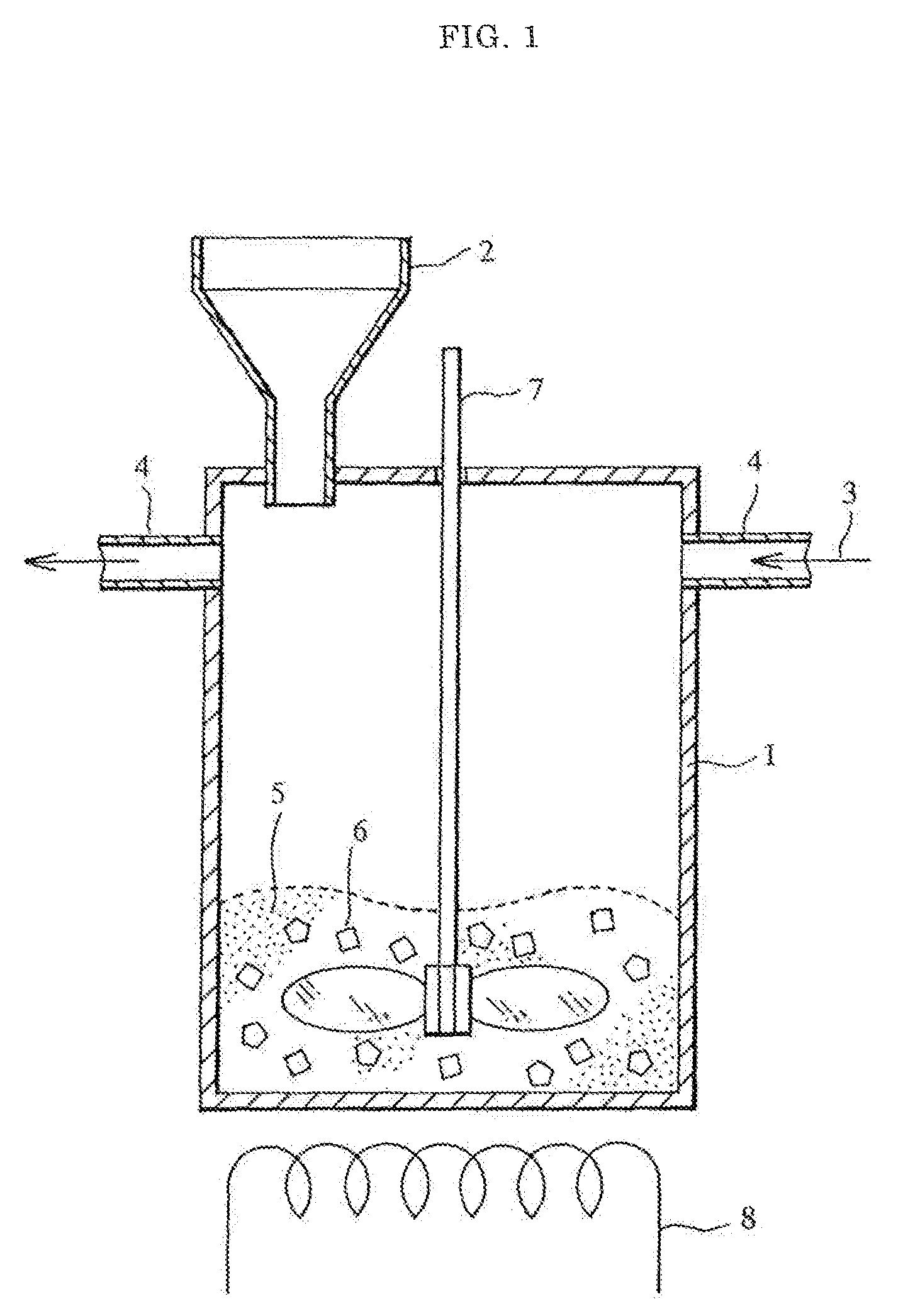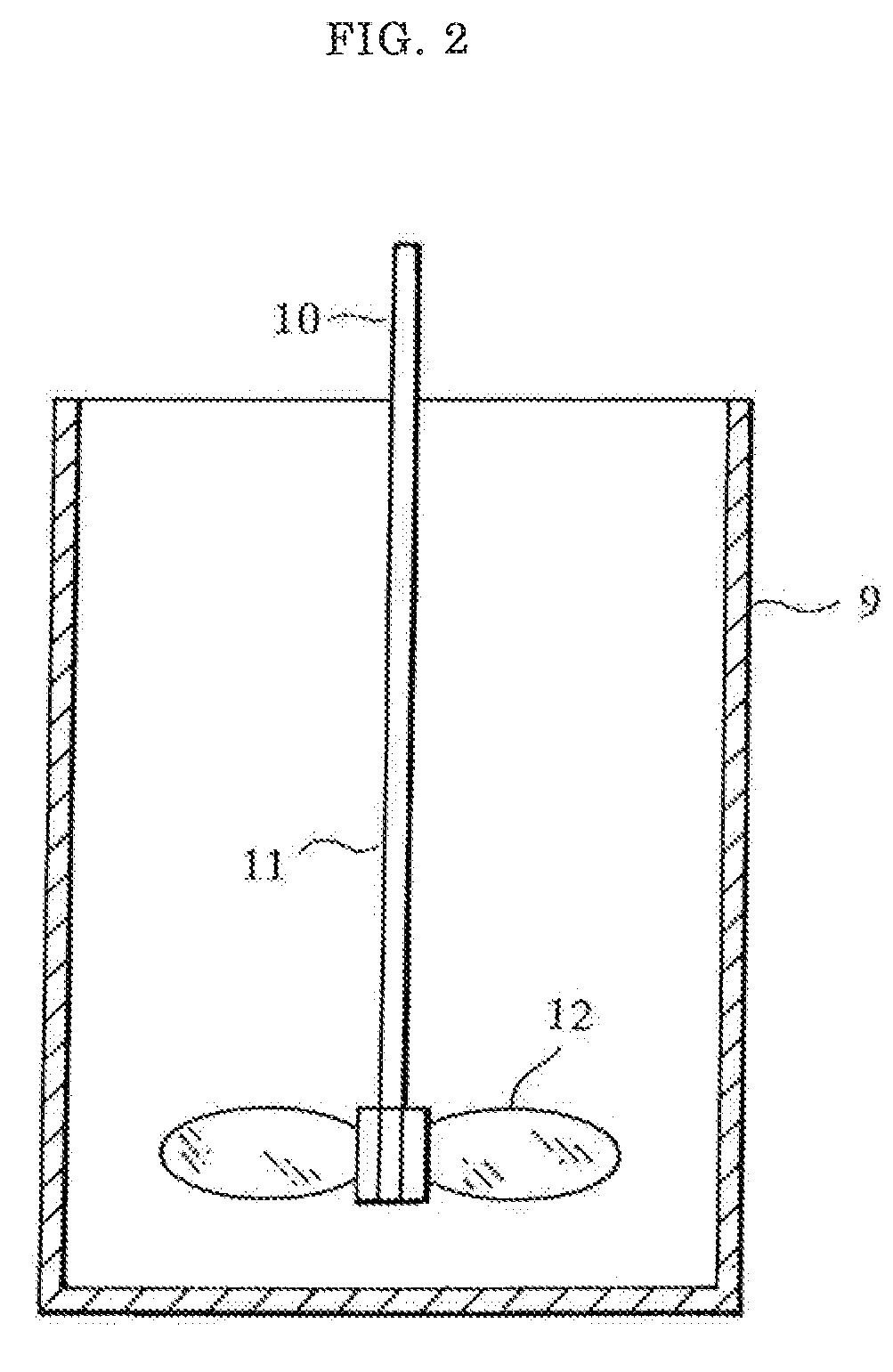Catalyst and method for thermal decomposition of organic substance and method for producing such catalyst
a technology of organic substances and catalysts, which is applied in the direction of catalyst activation/preparation, metal/metal-oxide/metal-hydroxide catalysts, hydrocarbon by hydrocarbon cracking, etc., can solve the problems of granules of titanium oxide obtained, method problems, easy wear and pulverization, etc., and achieves a good flowability, hardly pulverized, and the effect of minimizing wear
- Summary
- Abstract
- Description
- Claims
- Application Information
AI Technical Summary
Benefits of technology
Problems solved by technology
Method used
Image
Examples
example 1
[0056]A slurry of titanium hydroxide obtained in the hydrolysis step in a process for producing titanium oxide by a sulfuric acid method was filtered, washed with water, and repulped to give a slurry A. Nitric acid was added to the slurry A as a solating agent to give a sol B of titanium oxide. Then, a part of the sol B was heated and dried at 100° C. to give a dried gel. The dried gel was calcined in an electric furnace at 500° C. for 3 hours to give a titanium oxide calcined product C.
[0057]The titanium oxide calcined product C was pulverized, and the resulting pulverized product was granulated using High Shear Mixer Granulator SPG-25 manufactured by Dalton Co., Ltd. under conditions of a mixing propeller speed at 250 rpm and a high speed chopper speed at 3000 rpm while spraying the pulverized product with the sol B diluted five times with water to give granules of titanium oxide.
[0058]The granules of titanium oxide were dried at 100° C. for 3 hours, then calcined at 600° C., and ...
example 2
[0066]The slurry A of the titanium hydroxide obtained in Example 1 was heated and dried at 100° C. to give a dried gel. The dried gel was calcined in an electric furnace at 500° C. for 3 hours, and then pulverized to give a pulverized product of the titanium oxide calcined product D. Then, 50 parts by weight of the pulverized product of the titanium oxide calcined product D was mixed with 50 parts by weight of the pulverized product of the titanium oxide calcined product C.
[0067]A mixture of 50 parts by weight of the pulverized product of the titanium oxide calcined product D and 50 parts by weight of the pulverized product of the titanium oxide calcined product C was treated in the same manner as that in Example 1, and the obtained granules were dried, calcined, and sieved to give granules having a particle diameter of 0.1 to 1.2 mm.
[0068]The granules of titanium oxide obtained in this manner had a specific surface area of 62 m2 / g, a pore volume of 0.28 mL / g, a tap density of 1.06 ...
example 3
[0070]The granules of the titanium oxide obtained in Example 1 were further granulated so as to have a more spherical shape using with a tumbling granulator “Marumerizer” while spraying the granules of the titanium oxide with a mixture of the pulverized product of titanium oxide C obtained in Example 1 and the sol B diluted four times with water. The obtained granules were treated in the same manner as that in Example 1 to give granules having a particle diameter of 0.1 to 1.2 mm. The granules of titanium oxide had a specific surface area of 59 m2 / g, a pore volume of 0.17 mL / g, a tap density of 1.18 g / mL, and a wear rate of 0.3%.
[0071]Thermal decomposition of polyethylene resin was carried out using the granules of titanium oxide obtained above as a thermal decomposition catalyst in the same manner as in Example 1. As a result, the time needed to thermally decompose and completely gasify the polyethylene resin was 8 minutes.
PUM
| Property | Measurement | Unit |
|---|---|---|
| temperature | aaaaa | aaaaa |
| particle diameter | aaaaa | aaaaa |
| tap density | aaaaa | aaaaa |
Abstract
Description
Claims
Application Information
 Login to View More
Login to View More - R&D
- Intellectual Property
- Life Sciences
- Materials
- Tech Scout
- Unparalleled Data Quality
- Higher Quality Content
- 60% Fewer Hallucinations
Browse by: Latest US Patents, China's latest patents, Technical Efficacy Thesaurus, Application Domain, Technology Topic, Popular Technical Reports.
© 2025 PatSnap. All rights reserved.Legal|Privacy policy|Modern Slavery Act Transparency Statement|Sitemap|About US| Contact US: help@patsnap.com



